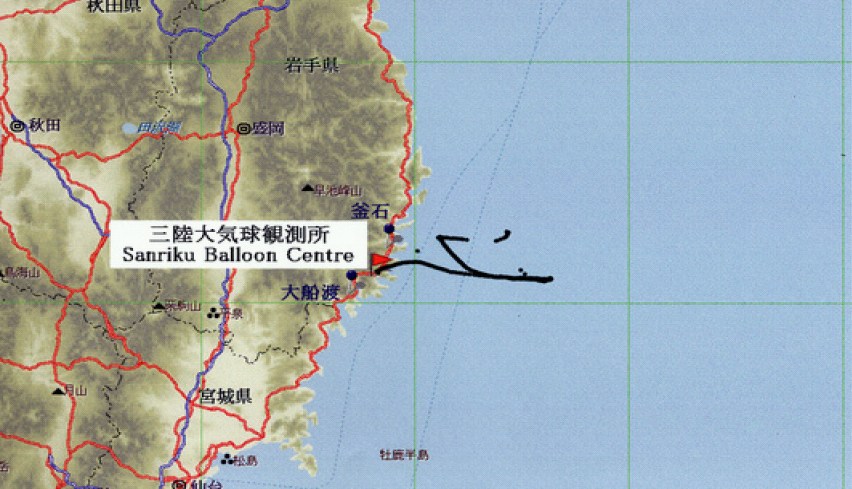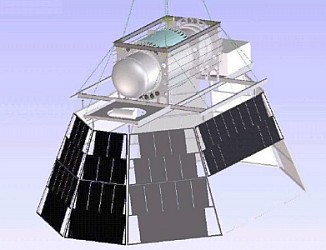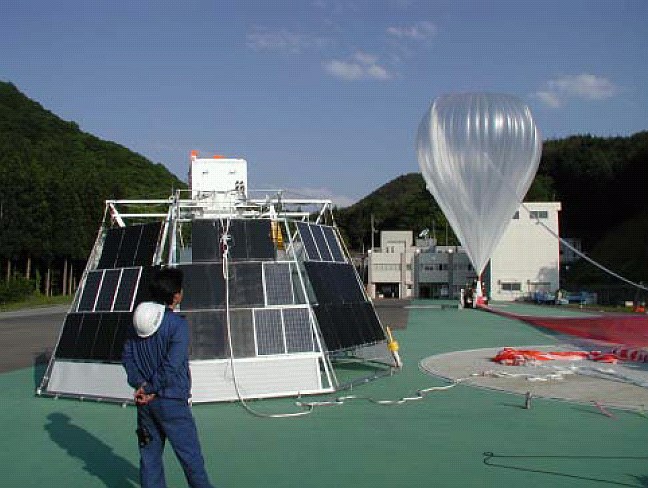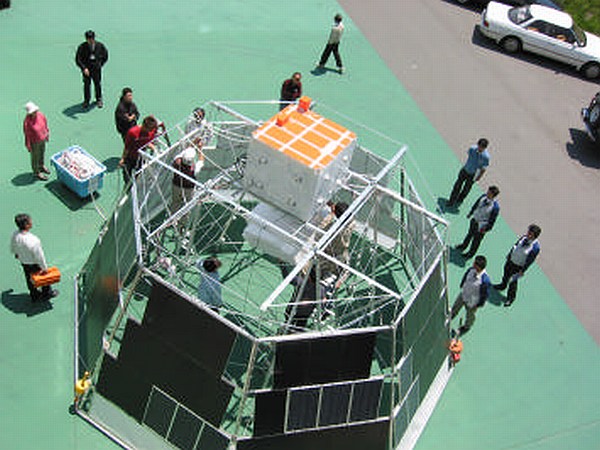Purpose of the flight and payload description
BESS (the Balloon-borne Experiment with a Superconducting Spectrometer) is a joint project of Japanese and US scientists to search for antimatter in the cosmic radiation, as well as measure energy and intensity of less exotic components of the cosmic radiation. The current version of the BESS instrument, BESS-Polar, is similar in design to previous ones, but is completely new with an ultra-thin magnet configured to minimize the amount of material in the cosmic ray beam, so as to allow the lowest energy measurements of antiprotons.
This particular flight was a technological one aimed to test a new power system using solar cells developed to supply near near 900W of energy to the electronics onboard the POLAR-BESS payload.
The system consists of an omni-directional solar-cell array-structure of 90 Sharp NT3436BD solar-cell modules mounted on an octagonal frame, (see picture at left) in wich each side is designed to have the same area so that no orientation control is required to achieve the high reliability of power production.
In order to test the artifact, it was flown on a technological flight from Sanriku. The total weight of the payload was about 380 kg including the house-keeping system, which monitored temperatures of the panels, output voltages and currents, and solar inputs.
Details of the balloon flight

Balloon launched on: 5/30/2002 at 6:35 jst
Launch site: Sanriku Balloon Center, Iwate, Japan
Balloon launched by: Institute of Space and Astronautical Science (ISAS)
Balloon manufacturer/size/composition: Zero Pressure Balloon model B30 30.000 m3
Flight identification number: B30-70
End of flight (L for landing time, W for last contact, otherwise termination time): 5/30/2002 at ~ 11:00 jst
Balloon flight duration (F: time at float only, otherwise total flight time in d:days / h:hours or m:minutes - ): 4 h 45 m
During the flight, the solar-cell array-structure was monitored by a video camera installed at the lower end of the parachute.
Appropriate performance was found on launching and termination. House keeping data were transmitted to the ground by the Telemetry system and were analyzed to check consistency between data and simulation results.
The system worked well in this technological flight.
External references
- Scientific observations with balloons Institute of Space and Astronautical Science Annual Handbook 2002 (In Japanese)
- Sounding rockets and ballooning activities of Japan in 2001 and 2002 16th ESA Symposium on European Rocket and Balloon Programmes and Related Research
- The First Series of Scientific Ballooning Experiments in FY2002 JAXA website
1887If you consider this website interesting or useful, you can help me to keep it up and running with a small donation to cover the operational costs. Just the equivalent of the price of a cup of coffee helps a lot.




